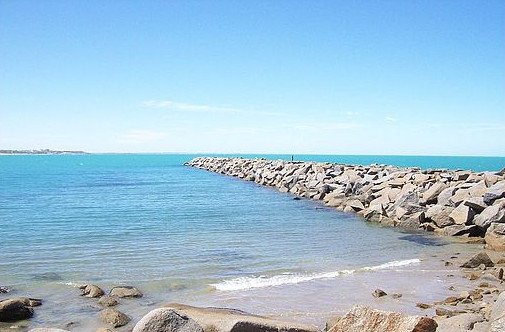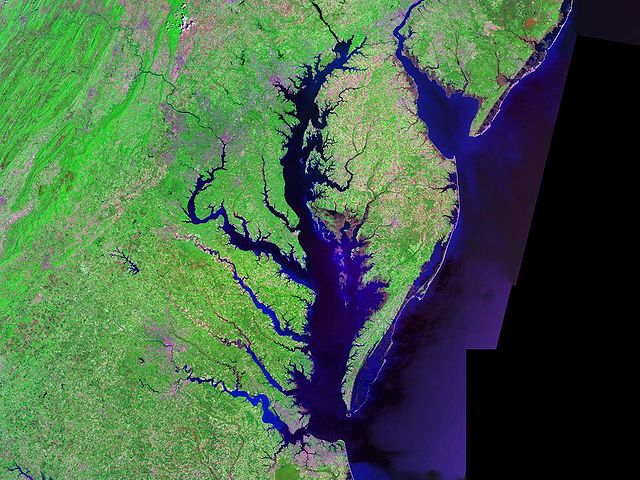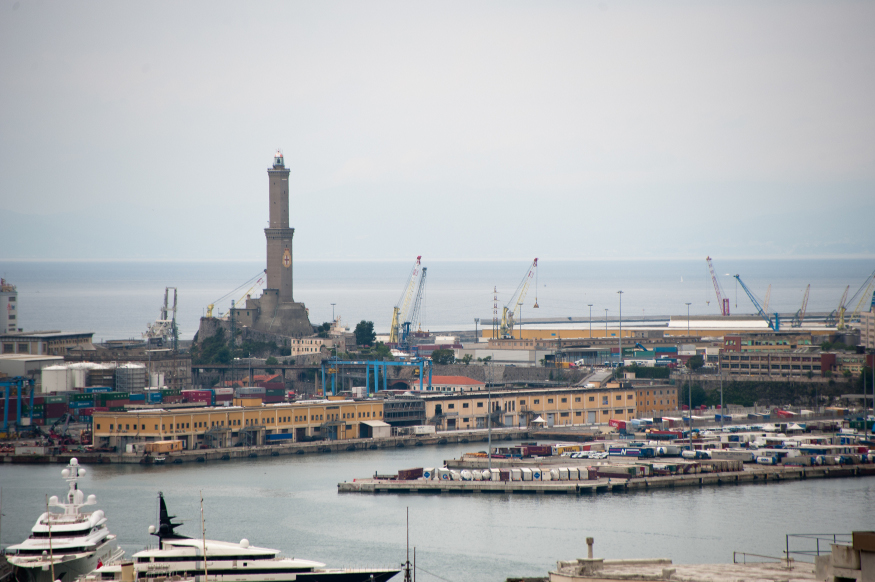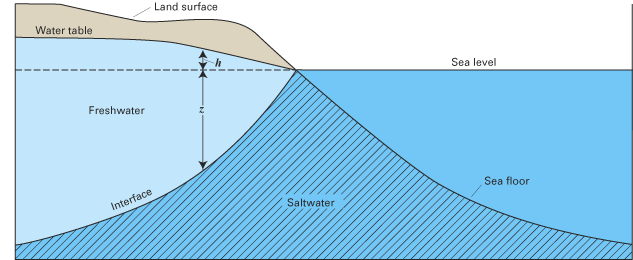The coastlines are natural environments with extremely relevant socio-economical and ecological value. Coastal areas occupy less than 15% of the Earth's land surface, but accommodate more than 40% of the world population. In fact, about 1.2 billion people live within 100 km of a coastline and 100 m of altitude above sea level, with an average density nearly 3 times higher than the global average for population (see here for more details). In Italy about 60% of the total population lives in coastal areas and about 24% of the population is concentrated in big coastal cities.
In fact, the seashore of lakes and sea is an important feature of any country. It is well known that sea resources play an important role in the economic development of a country. Sea resources include fishing, seaborne trade, tourism and related commercial activities. In many countries with a long extension of the seashore, for instance those located in the Mediterranean, South Pacific and Caribbean, tourism is vital to the economy. Landlocked countries, in fact, are known to be disadvantaged. Several countries have made efforts to gain access to the sea, so that only 48 countries in the world are currently landlocked.

Figure 1. Landlocked countries. By NuclearVacuum [CC BY-SA 3.0 (http://creativecommons.org/licenses/by-sa/3.0) or GFDL (http://www.gnu.org/copyleft/fdl.html)], via Wikimedia Commons
Furthermore, coasts and adjacent areas are extremely diverse ecosystems with a delicate equilibrium, that plays a fundamental role for marine life and therefore sea protection and restoration. In fact, coasts host several different plant, wildlife and insect species that play a relevant role in the food chain. These resources, and in particular the opportunity of fishing and trading in ancient times, have attracted humans along the seashore for thousands of years. As a consequence, the coastline is usually heavily impacted by human activities.
We define the coastline as the line that forms the boundary between the land and the ocean, or a sea or a lake, at their high tide mark. It cannot be precisely determined due to the coastline paradox. Some countries, and in particular the islands, are characterized by a very long extension of coastline. Even if the coastline paradox makes the computation of the seashore length somehow subjective, once the scale of representation of the underlying map is fixed an estimation is possible and interesting for comparison purposes. The coast/area ratio [m/km2] for several countries is reported here. It can be seen that islands, or countries highly curved by the sea, show high ratios.
The main drivers that shape the coastline are fluvial deposition and erosion caused by waves, which break when approaching the coastline therefore releasing their energy. The mix of erosion and deposition, along with the geology and morphology of the lands, originates several different forms of coastline.
The literature proposes several different criteria to classify the different types of coastlines. Criteria can be divided in two broad categories:
- Descriptive criteria, which are based on morphological and/or lithological parameters;
- Genetic criteria, which are based on the analysis of the processes that led to the formation and modeling of the coast shape.
A first descriptive criteria allows one to divide the coast forms in two categories:
- Cliffed coast, which are originated by erosion and are characterized by highly sloping or vertical transition between the land and the sea. The cliffed coast is often characterized by the presence of "pocket beaches", which are isolated and small beaches with low slope. They are typically located at the outlet of rivers;
- Flat coast, which is originated by deposition, and has mild slope.
The flat coasts include the beaches, which are defined as accumulations of loose sediments of varying size and type. The shape and the forms of the beaches are mainly determined by mechanical forcings, including tides, waves, currents, wind, and fluvial deposition. The sediments are provided by cliff erosion and/or fluvial sediment load. In some cases there might be a significant organic component given by, for instance, marine shells.

Figure 2. Example of beach in a flat coast. Granite island, South Australia. By Brandy Frisky (Own work) [CC BY-SA 3.0 (http://creativecommons.org/licenses/by-sa/3.0) or GFDL (http://www.gnu.org/copyleft/fdl.html)], via Wikimedia Commons
A genetic criteria of classification divides the coasts between emergent and submergent coasts. Emergent coasts may be originated by an uplift of the land surface or a decrease of sea level. Emergent coasts may be characterized by the presence of rocky cliffs and flat platforms. An interesting example of an emergent coastline, because of tectonic uplift, is the west coast of North America.
Submergent Coasts are those that have been inundated by sea because of land subsidence or significant sea level increase, for instance due to global warming after the past glaciations. A distinguishing feature of submergent coasts are river valleys or glacially-carved valleys that have been filled up by ocean water. An example of ancient river valley that was flooded by sea water after glacier melting is the Chesapeake Bay of the eastern United States.

Figure 3. Satellite (Landsat) picture of Chesapeake Bay (center) and Delaware Bay (upper right) - and Atlantic coast of the central-eastern United States. By Landsat/NASA - Landsat photo, from circa 2000. Generated via from NASA data, Public Domain.
The sea port is the connection between the ocean and the coastal society. Ports are needed to allow humans to to navigate the sea and the ocean. In fact, the port is the place where ships, people and merchandise can enter a country from the sea and can leave. As such, the port plays a fundamental role in the social organisation of cities and countries, as it is closely connected with tourism, commercial activities and therefore the internal politics of the country. In the socio-economic and industrial context the port is often the driver of important commercial activities and therefore is to be adequately considered in social and urban planning.
Economic theory refers to ports as important factors of economic development. Most of the world’s major cities are port cities, even if in some cases port activity nowadays plays a smaller role than in the past in the economy of their regions. In fact, ports expand the market opportunity of both national and international firms, increase competition and therefore have an impact on the economic dynamics. Ports are also very important for fishery and food trade.
To give an example, the port of Genoa is characterised by the following figures:
- More than 51.000.000 tons/year of goods moved;
- About 6.000 docks/year;
- About 4.000/day cars and trucks in/out into/from the port;
- About 3.000/day trains in/out to/from the port;
- About 2.400.000 containers (TEU)/year in/out;
- About 2.800.000 passengers/year moved.
The port of Genoa is connected to the industrial and touristic activities of the whole North-West of Italy and the islands of Sardinia and Corsica. It is relevant to traffic management, road and infrastructure planning and urban planning of a large area.

Figure 4. The port of Genoa. By Mstyslav Chernov - Self-photographed, http://mstyslav-chernov.com/, CC BY-SA 3.0, https://commons.wikimedia.org/w/index.php?curid=25811432.
Ports and other transport infrastructures provide an economic benefit. It is well known from history that many ancient civilisations flourished by establishing commercial activities through maritime trade and therefore ports, including:
- Ancient China (port of Guangzhou);
- Ancient Egypt (port of Canopus);
- Ancient Greece (port of Piraeus);
- Ancient India (port of Muziris);
- Ancient Rome (port of Ostia Antica).
An interesting description of the social and commercial values of ports is given by Notteboom, Pallis and Rodrigue (2022). The chapter which discusses the social and commercial value of ports is here.
Beaches are very popular places for tourism at the international level. They attract a lot of people looking for healthy vacations, as well as individual and family leisure. Tourism triggers a relevant sequence of related commercial businesses, which in many countries are a fundamental driver for the local, regional and national economy. In many cases beaches are owned by the state and are given in concession to private individuals or public administrations which manage the access of tourists and touristic attractions. The efficient management of such activities and the allocation of the necessary resources needs to be based on assigning an economic value to beaches. This is also needed as in several cases beaches need to be protected by the human impact in order to preserve their attractiveness and value. This video explains the project that is ongoing to restore the Chesapeake Bay.
Assigning an economic value to a natural environment like beaches is a classical challenge in environmental economics. The following issues should be taken into account.
- Economics of beaches is still a discipline in its nascent stage. It focuses on the evaluation of the economic benefit provided by a beach, by taking into account its role in triggering the related commercial businesses. The result is expected to be the return on investment for any funds devoted to management and maintenance. This is a necessary information for administrations to allocate resources.
- Beaches are extremely important environmental assets, but it is difficult to assign an economic value to them as such. Recognizing environmental value is fundamental for planning any allocation of resources devoted to beach maintenance. In particular, the ecological value of beaches has been rarely evaluated and needs to be properly estimated.
- Beaches are popular recreational places and it is therefore important to maintain the public access at a reasonable price. The recreational value of beaches needs to be re-affirmed by assigning an economic value to it. Even if public access did not provide any return on investment, the investment would be justified in view of the economic value of public recreation.
- Beaches can be a protection again natural hazards like tsunami or heavy sea storms. As such, they possess a related economic value.
- Beaches have an intangible importance to the health and welfare of people. Beaches are a significant cultural heritage and are fundamental to local culture. Loss of beaches can be expected to adversely affect society.
Assigning aneconomic value to beaches requires an interdisciplinary effort, with a close interaction between economists, engineers, natural scientists and researchers from any other relevant discipline.
Sandy beaches often look like a desert environment. Actually, a close look reveals the presence of several different forms of life. Within the sand live buried microbes and phytoplankton, while macrofauna and vertebrates, like for instance sea turtles, may populate the beach environment. Sandy beaches are often refuge for migratory or resident shorebirds and surf-zone fishes. As a result of the interaction among these components, sandy beaches may exchange sand, organic matter and nutrients with adjacent habitats, which may be located in the sand dunes that are located above the beach and the surf zone within the sea. An important service provided by sandy beach ecosystems is the decomposition of organic matter, and the re-mineralisation of nutrients by small benthic organisms.
Beaches, and in particular the dune zone, may host vegetation that plays a fundamental role in ensuring the stability and preservation of the beach environment. The zone that is adjacent to the sea, namely, the lower part of the dune, is occupied by highly specialized species that can resist to the action of strong winds and the presence of salt spray. They typically grow close to the ground in order to better reduce their exposure to strong wind and moving sand. These species have a strong root system that allow them to survive the scarcity of nutrient that typically characterizes the beach environment. Such vegetation is extremely important to ensure the stability of the sand dune.
In the foredune zone there are more nutrients and therefore a more complex vegetation environment may grow up. Trees and forests can be found in the hind dune.

Figure 5. Vegetation on a beach in Germany. CC BY-SA 2.5, Link
The growth of vegetation on sandy beaches is also regulated by the the availability of freshwater in the sand, that is accumulated over the land and triggers a groundwater flow towards the sea. In the vicinity of the coastline the freshwater flux interacts with saltwater intruding into the lands (see Figure 6). The interplay in the underground between salt water and fresh water is regulated by climate, the height of the water table (h in Figure 5), the soil features, the density of salt water and the oscillation of sea level due to tides, sea storms and occasional shocks like tsunamis. The position of the interface between fresh and salt water is impacted by human activities like groundwater pumping, and is of course an essential driver for the development of vegetation. Where the salt water is closer to the land surface, like in the proximity of the coastline, only species with very superficial roots can develop. The presence of steep slopes in the lands close to the coastline, or the presence of a significant flux of freshwater from the lands themselves, may favour the growth of well developed vegetation, like for instance trees, even in close vicinity of the seashore. Ecological models may provide a prediction of the sustainability of vegetation forms for given climatic, hydrological and ecological conditions.

Figure 6. Saltwater intrusion. From Barlow, Paul M. (2003). Ground Water in Freshwater-Saltwater Environments of the Atlantic Coast. USGS. Retrieved on 2009-03-21. Figure B-1
Beach protection is today emerging as one of the most relevant environmental issues at the global level. The increasing vulnerability of beaches to human impact and the effect of climate change are determining an increasing risk which implies a significant socio-economic threat. In fact, erosion of beaches and coastlines is observed with increasing frequency, with implications on the societal resilience to natural hazards. Beach erosion has also an impact on tourism and therefore the related economic activities.
Sea storms, tides, and wave induced erosion are causing significant changes in shoreline morphology and quality therefore highlighting the need for an efficient strategy for protection and recovery. The above need has triggered an intensive research activities that provided fundamental contributions to advance coastal engineering and protection of marine environment.
Several different techniques can be applied for protecting beaches and the seashore, ranging from structural methods (the so-called hard interventions) to green solutions that are the subject of increasing attention in recent times. These techniques will be presented in what follows. The next lecture will be devoted to the description of such solutions and then the methods for their design, along with the related theoretical basis, will be subsequently discussed.
Defeo, O., McLachlan, A., Schoeman, D. S., Schlacher, T. A., Dugan, J., Jones, A., Lastra, M., & Scapini, F. (2009). Threats to sandy beach ecosystems: a review. Estuarine, Coastal and Shelf Science, 81, 1-12. http://www.beachapedia.org/ (visited on Dec 28, 2016) http://asbpa.org/, http://www.asbpa.org/news/newsroom_14BN0114-the-value-of-beaches.htm - Web site of the American Shore and Beach Preservation Association.
Da Silva Bessa, A.F., Ecological status and functioning evaluation of sandy beach ecosystems:A macrobenthic community based approach, Ph.D. Thesis defended at the University of Coimbra, 2013, available on-line at https://estudogeral.sib.uc.pt/bitstream/10316/24112/1/tese_dout_FilipaBessa.pdf
The Powerpoint presentation of this lecture
Last updated: September 16, 2022
- 354 viste
